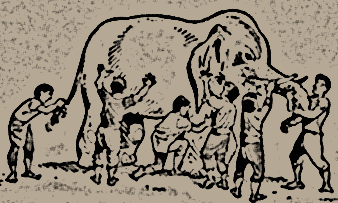ANICCA THE CHARACTERISTIC of IMPERMANENCE
The Blessed Buddha once said:
What, Ananda, is the experience of impermanence, inconstancy and transience?
When a Bhikkhu, having gone to a forest, to the foot of a tree, or to an empty place, reflects thus: All form is inconstant, all feeling is fleeting, any experience is impermanent, all mental construction is transient, and all consciousness is momentary, and in this way remains understanding impermanence, the inconstancy and transience of these 5 Clusters of Clinging (the Five Aggregates)…Then this, Ananda, is indeed the very experience of impermanence. The perception of inconstancy and the sensation of transience.
The Pali word anicca is a compound word consisting of “a” meaning non-, and “nicca” meaning “constant, continuous, permanent”. While the word ‘nicca’ refers to the concept of continuity and permanence, ‘anicca’ refers to its exact opposite; the absence of permanence and continuity. The term appears extensively in the Pali canon.
Impermanence or change is a fundamental concept in Buddhism. Without a realization of it, there can never be any true insight through which we can see things as they really are. The Buddha teaches that we can only understand dukkha and anatta through an understanding of anicca. It is the knowledge of anicca, impermanence, that heals dukkha, suffering. By understanding anicca, we come to understand that there is no permanent entity underlying our life (anatta).
Buddhism dealt with the problem of impermanence in a very rational manner. The Buddha noted that impermanence was inherent in the human existence. He recognized three forms of anicca, namely compounded, constructed or fabricated. They pointed to an undeniable and inescapable fact of human existence from which nothing on earth was ever free. The Buddha suggested that each being was an aggregate of impermanent things, and that the phenomenal existence or conditioned existence is characterized by five distinct processes, on which human beings have no control and which none can ever change. The five processes are: growing old, falling sick, daying and destruction, decay of perishable things and the passing away of that which is liable to pass.
None can escape from these five aspects of impermanence until one achieves liberation or nirvana on the Eightfold Path, practicing right living and cultivating right attitude and awareness.
Impermanence is an essential concept of the Dhamma. All things in the phenomenal world are impermanent and all events are uncertain as to occurrence, effect and duration. Some physical objects, such as a mountain, or planet, or the universe, maintain a physical form for a longer period of time than a butterfly, an apple, a thought, or a human body. All will decay, change form, and fade from existence. According to Buddhism, everything in human life, all objects, as well as all beings whether in heavenly or hellish or earthly realms in Buddhist cosmology, is always changing, inconstant, undergoes rebirth and redeath (Samsara). This impermanence is a source of dukkha. This is in contrast to nirvana, the reality that is nicca, or knows no change, decay or death
Another way of describing the impermanence of all phenomenal things is that uncertainty is characteristic of all phenomenal things. We can never know what the next moment will bring. Ignorance of uncertainty develops clinging and suffering. Wisdom is knowing, understanding, and accepting impermanence and uncertainty. Wisdom brings a mind of calm and spacious equanimity.
The importance of understanding impermanence cannot be overstated. It was impermanence that the Buddha spoke of in his last teaching: “Impermanent are all conditioned things. Decay is relentless. Work diligently for your own understanding.” (Digha Nikaya 16)
The Buddha understood the impermanence of all things in the phenomenal world but did not over-emphasize phenomenal impermanence or creating anything special regarding the general impermanence of the world. He placed emphasis on understanding the impermanence of what is commonly viewed as a self and the self’s relationship with the impermanence of the phenomenal world.
“Friends, form (physical objects and the physical body) is like foam. Seeing clearly, form is empty and without substance. Whether past, present or future, internal, external, subtle or obvious, seeing form as it is, like foam on the water, brings wisdom to the well-instructed. Clearly seeing they become disenchanted with form, disenchanted with feeling, disenchanted with perception, disenchanted with fabrications and disenchanted with consciousness. Disenchanted one grows dispassionate. With dispassion comes release (from craving and clinging.)
“Friends, when a learned follower has heard the truth and understands the truth they will no longer cling to form, or to feeling, or to perceptions, or to fabrications, or to the flow of thoughts. They will see clearly ‘this is not me, this is not mine, this is not myself.’ They are fully released.” (Samyutta Nikaya 22.95)
Anicca is crucial to the understanding of Samsara. Samsara, or the cycle of rebirth, suggests impermanence of a state of being, suggesting that the “moment of existence” (life) will determine the following “moment of existence.” However, total enlightenment according to vajrayana Buddhism, suggests an end of “Samsara,” suggesting a negation of anicca through the attainment of enlightenment.
Acceding intellectually to the truth of impermanence is termed in Buddhism the acquisition of the “right view” and is synonymous with the entry on the path to enlightenment. The discernment of impermanence correspondingly represents the “explosion” or “dissolution” of all wrong views because the construction of any metaphysical system necessarily rests upon the assumption of some notion of “permanence” or of some element of “permanence” within it; therefore, the acceptance of anicca works counter to the tendency to superimpose constructions on reality.
When we can truly accept and understand this universal law of impermanence, we can begin to let go of anything we may be holding onto, recognizing that all things are transitory. To hold on to past experiences, imaginings, relationships is only going to cause pain and suffering. Attempting to hold on to moments, people, things anything in the material world (including emotions, cognition etc) will inevitably bring suffering – it is like trying to hold on to the water in a river as it flows past.
“Be mindful of impermanence to end conceit. When impermanence is understood it is also understood that none of this is self. Understanding not-self uproots conceit, uproots I-making. When fully established, the release is complete.” (Anguttara Nikaya 9.1)
Every moment is anicca – every moment is an opportunity for enlightenment. Enlightenment is a combination of an infinite number of moments of awakening. Thus, it is important to recognize anicca in all things in order to experience the moment as it is. By recognizing the impermanence of the moment we will be more able to pay attention to all the things and recognize them for what they are.
photo credit: what-buddha-said




